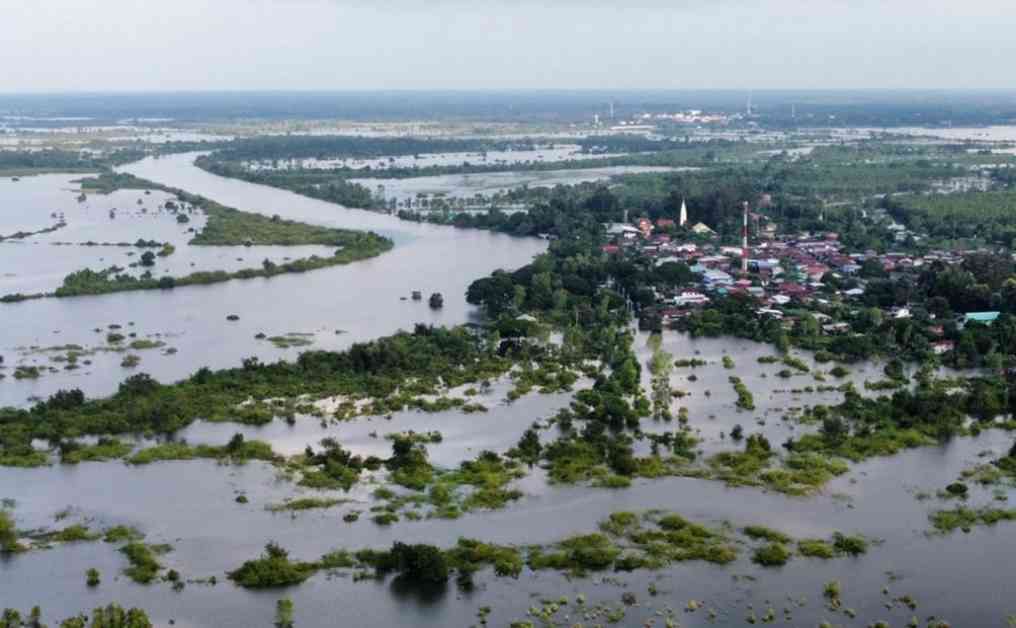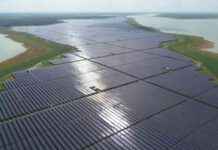Flooding Crisis in Nakhon Phanom Province: 200 Homes Submerged, Over 5,000 Acres of Rice Fields Damaged
The flooding crisis in Nakhon Phanom Province continues to escalate, with over 200 homes submerged and more than 5,000 acres of rice fields damaged. The situation remains dire as the water levels in the Mekong River have not receded significantly, causing widespread devastation in the region.
The latest reports indicate that the water level in the Mekong River in Nakhon Phanom Province has started to gradually decrease, alleviating some of the crisis. Currently, the water level is approximately 11.00 meters, which is below the danger level of 12 meters. However, the water is still flowing downstream towards the lower northeastern regions, including Amnat Charoen and Ubon Ratchathani provinces, at an accelerated pace due to the lack of additional water flow and continuous rain.
One of the most heavily affected areas is the communities located along the Un and Songkhram Rivers in the Tha Bo Songkhram sub-district of Sri Songkhram district. The slow drainage of both rivers into the Mekong has caused them to overflow their banks, inundating the low-lying areas and submerging over 50,000 acres of rice fields. Additionally, many homes and structures are still underwater, posing significant challenges for the residents.
The impact of the flooding crisis extends beyond just residential areas. The livestock farming industry has also been severely affected, with thousands of cattle and buffalo struggling to find dry land to graze. Farmers are facing difficulties in providing adequate feed for their animals, as the flooded fields have left them with limited options. The rising costs of compressed hay have further exacerbated the situation, forcing farmers to incur additional expenses to sustain their livestock.
In response to the crisis, the authorities, led by Colonel Atipong Kaewduangyai, the commander of the 22nd Mobile Development Unit (Nakhon Phanom 22) under the Royal Thai Army Development Office, have initiated relief efforts to assist the affected farmers. They have mobilized the transportation of dried hay and forage in compacted bales, totaling more than 400-500 bales, to provide much-needed support to the agricultural community.
Relief Efforts and Community Support
Amidst the ongoing crisis, local officials, including Mr. Wanchai Jantornphol, the governor of Nakhon Phanom Province, along with Ms. Kornkan Kaewdee, the district chief of Sri Songkhram, and representatives from the Thai-Vietnamese Community Association in Nakhon Phanom, have visited the affected areas to assess the situation and provide assistance to the residents.
A total of 70 livelihood kits were distributed to the flood victims in Ban Nam Un, Moo 4, Tambon Sri Songkhram, as well as 37 kits to the residents of Tambon Had Phaeng. These kits included essential items to help the affected families cope with the challenging circumstances and serve as a gesture of solidarity and encouragement during these trying times.
Additionally, relief efforts have extended to the farthest reaches of the province, with aid being delivered to the most remote communities impacted by the flooding. The residents of Ban Pak Yam in Moo 4, Tambon Sam Phong, Sri Songkhram District, have also received essential supplies to help them navigate through the crisis.
Challenges and Long-Term Solutions
Despite the gradual decrease in rainfall and the receding water levels in the Mekong River, the situation in Nakhon Phanom Province remains critical. The heavy rainfall in neighboring provinces like Sakon Nakhon and Udon Thani continues to feed into the Un and Yam Rivers, which eventually converge with the Songkhram River in Sri Songkhram District.
The convergence of these rivers has led to prolonged flooding in the area, with significant impacts on agriculture and residential areas. The provincial authorities are closely monitoring the situation and coordinating efforts to mitigate the effects of the flooding on the local communities.
As the residents of Nakhon Phanom Province continue to grapple with the aftermath of the flooding crisis, it is imperative for the government and relevant agencies to provide ongoing support and assistance to help them recover and rebuild their lives. Long-term solutions, such as improved drainage systems and early warning mechanisms, are essential to prevent future disasters and protect the vulnerable communities in the region.
In conclusion, the flooding crisis in Nakhon Phanom Province has brought about significant challenges for the residents and farmers in the area. The collaborative efforts of the authorities, local officials, and community organizations are crucial in providing relief and support to those affected by the disaster. It is essential to prioritize the well-being of the affected populations and implement sustainable solutions to address the root causes of the flooding crisis in the region.




















